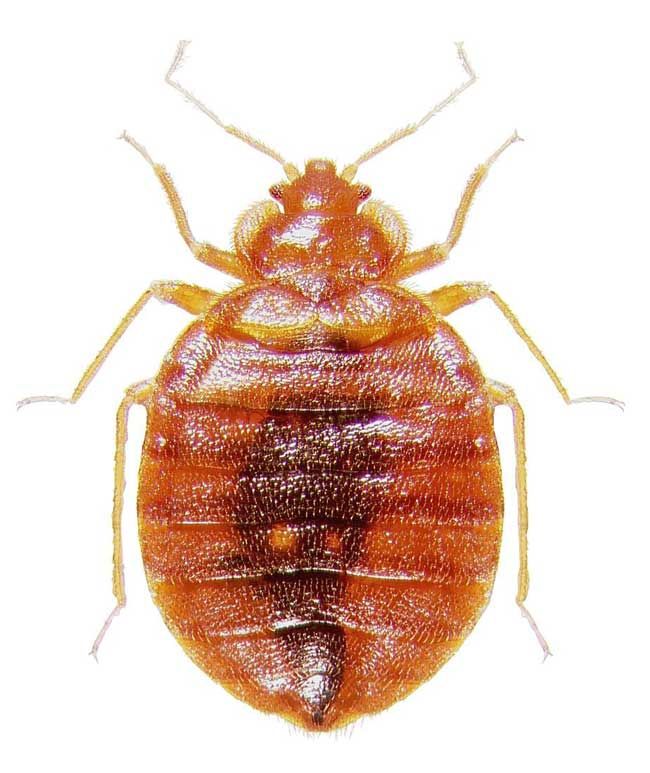Bedbug Scourge: Gene Study Traces Pesticide Resistance

Bedbugs collected from an infested Ohio apartment are providing genetic details about why the pests are so pesky, a finding that could lead to more robust weapons to defeat the blood-sucking insects once and for all. After several decades of remaining under the radar, bedbugs (Cimex lectularius) have taken off in North America and other parts of the world, with their numbers growing up to 500 percent over the past decade. Many cities are under siege by these tiny insects, which cause itching and rashes and are devilishly difficult to get rid of. That's because the bugs have developed resistance (an ability to fight off toxins that would usually kill them) to most of the common insecticides used by pest control technicians worldwide. Despite their worldwide recurrence, very little is known about this common household pest, according to Ohio State University researchers Omprakash Mittapalli and Susan Jones. Their new work reveals possible genes that relay pesticide resistance and also ways in which bedbugs stand out from other, less pesky, insects. "This is really the first effort to get into the genomics of the bedbug and to understand how it's similar and different than other insects," Coby Schal, an urban etymologist at North Carolina State University who wasn't involved in the study, told LiveScience."It's definitely a big step forward." Inside the bedbug genome The duo analyzed the genomes of the bedbug to look for answers. They examined a DNA intermediary called RNA, which makes proteins (the substances that carry out a gene's instructions). They also looked at how many copies of this RNA the bedbugs had for certain genes, which can influence the amount of protein made. They identified 35,000 genes, more than 17 times the number of genes known. They also compared the genes with those of other pests, finding that bedbugs are closely related to lice and aphids, though about 44 percent of the genes they found were unique to the bedbug. Some of these unique genes might be involved in resistance, but the researchers won't know until the genes are studied further. What they did find were differences in gene expression (meaning the production of proteins) between a normal lab strain of bedbugs, which had never been exposed to insecticides, and a pesticide-resistant strain that Jones collected from an infested apartment in Ohio . The gene in question belongs to the p450 family of genes that detoxify things that organisms (from animals and plants to bacteria and fungi) ingest, specifically the CPY9 genes. The pesticide-resistant bedbugs had much higher expression levels, leading researchers to think that it might be one mechanism of resistance. "It's a really good candidate," Mittipalli told LiveScience. "It's come out to be one of the best targets so far." The complex story of resistance Bedbugs actually have many ways to become resistant to pesticides. They can modify other detoxifying genes; they can grow a less permeable outer skin (to physically block out the toxic chemicals); or they can modify other proteins. The expression pattern of the CYP9 gene hints that it might be involved in at least some cases of pesticide resistance. Pesticides that are detoxified by this protein should be avoided, Schal said. "The take-home message is that it is much more complex than we thought, and that it's a combination of genetic changes in the bedbug genome plus differential gene expression," Mittipalli said."It can be a lot more complicated." Additional bedbug populations need to be studied, to see if these expression patterns hold across other resistant and non-resistant strains, though it's likely they will, Schal said. Mittapalli's group is working on follow-up studies to determine how important this gene is to pesticide resistance, and is searching for other resistance genes. The study was published online Jan. 19 in the journal PLoS ONE.
- Nature's Biggest Pests
- The 10 Most Diabolical and Disgusting Parasites
- Bedbugs: The Life of a Mini-Monster (Infographic)
You can follow LiveScience Staff Writer Jennifer Welsh on Twitter @microbelover.
Sign up for the Live Science daily newsletter now
Get the world’s most fascinating discoveries delivered straight to your inbox.
Jennifer Welsh is a Connecticut-based science writer and editor and a regular contributor to Live Science. She also has several years of bench work in cancer research and anti-viral drug discovery under her belt. She has previously written for Science News, VerywellHealth, The Scientist, Discover Magazine, WIRED Science, and Business Insider.












